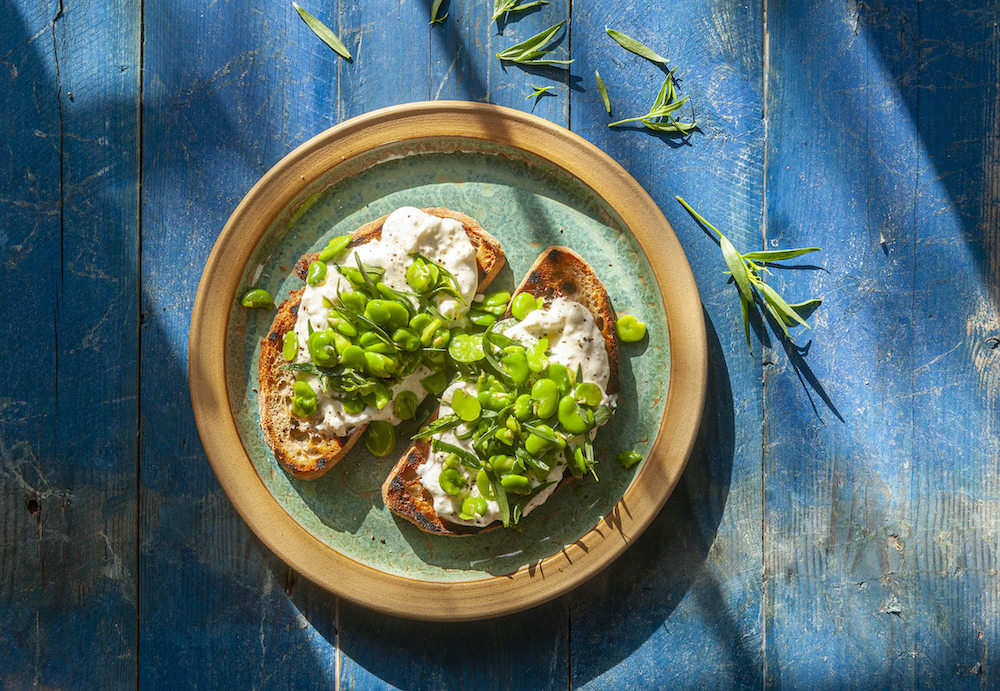If I had to power rank spring’s most quintessential legumes, I’d place fava beans at the very top.
To start, they’re believed to be the first domesticated food crop, with their earliest cultivation dating back 10,000 years in the Fertile Crescent. They tout both nutritional and environmental benefits: Fava beans are high in protein and help improve soil fertility when included in cropping systems. They’re also somewhat of a pop culture icon, thanks to “The Silence of the Lambs.” “I ate his liver with some fava beans and a nice chianti,” Anthony Hopkins’ Hannibal Lecter famously said.
While fava beans are generally available year-round, their peak season is during the spring, from late March through May. In North America, Canada is the largest producer of fava beans, while Minnesota and the lake states “produce small acreages,” according to Gary Hickman and Mick Canevari of the University of California, Davis’ Small Farm Center. Fava beans are also grown as seed crops in California, specifically along the coast and in the Northern Sacramento Valley. In other areas of the state, they are grown primarily as a cover crop, a plant grown to control weeds and promote soil health.
The beans themselves are encased in a green pod that must be peeled and shelled. To do so, simply snap off the stem ends of fava pods before peeling off their inner “string,” which keeps the beans intact. Fava beans are double-shelled, meaning each individual bean contains its own shell. To remove this second shell, blanch the beans for about a minute, drain, cool and then gently squeeze them out of their shells. Fresh, fully shelled fava beans should be vibrant green.
“I think people don't salt their water enough when they're blanching fava beans,” said Emilie Symons, chef-instructor of Plant-Based Culinary Arts at the Institute of Culinary Education’s Los Angeles campus and a lover of the legumes. “In general, if you're blanching and chopping a vegetable, you want that water to be like pasta water — almost as salty as the ocean.”
“One of my former culinary school instructors used to say as salty as tears,” she added.
Although there’s no specific ratio for water to fava beans, Symons suggested one-third beans to two-thirds water, or a one-to-two ratio. “You want them [the fava beans] to have enough room to kind of bubble and move around because that’s what cooks them,” she explained. “If they’re overcrowded, you’re not going to allow for any of that natural convection to occur. They’re not going to cook as evenly.”
Want more great food writing and recipes? Subscribe to Salon Food's newsletter, The Bite.
Fava beans are available fresh, canned and frozen. Per Symons, fresh is always the best option because it showcases the beans’ nutty and earthy flavor profile. “Fava beans in a can will have a very different taste and they have different textures,” she said. “My advice is to buy them fresh. If that’s too time-consuming, you can buy frozen fava beans — they already come peeled, shelled and blanched.”
“You can just take them out of the freezer and toss them into a stir fry or a pasta dish,” she added. “You can also use them as a filling.”
Fava beans are exceptional in a spring risotto, like this recipe from NYT Cooking that incorporates asparagus and saffron, or pasta primavera, or even a fava bean lemon ricotta dip spread on crostini.
“Fava beans are really fun, bright little pops of spring,” Symons said. “You can use them if you’re making a springtime minestrone soup, or you can use them in lieu of chickpeas. They make a really good purée and dip for plating.”
Read more
about cooking with legumes:


